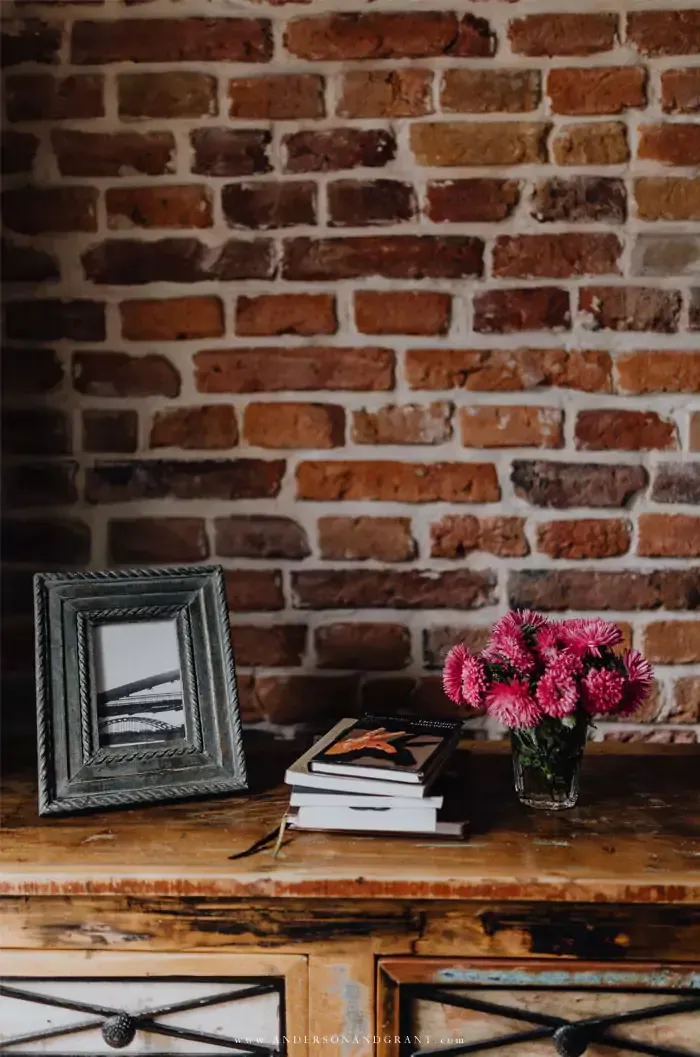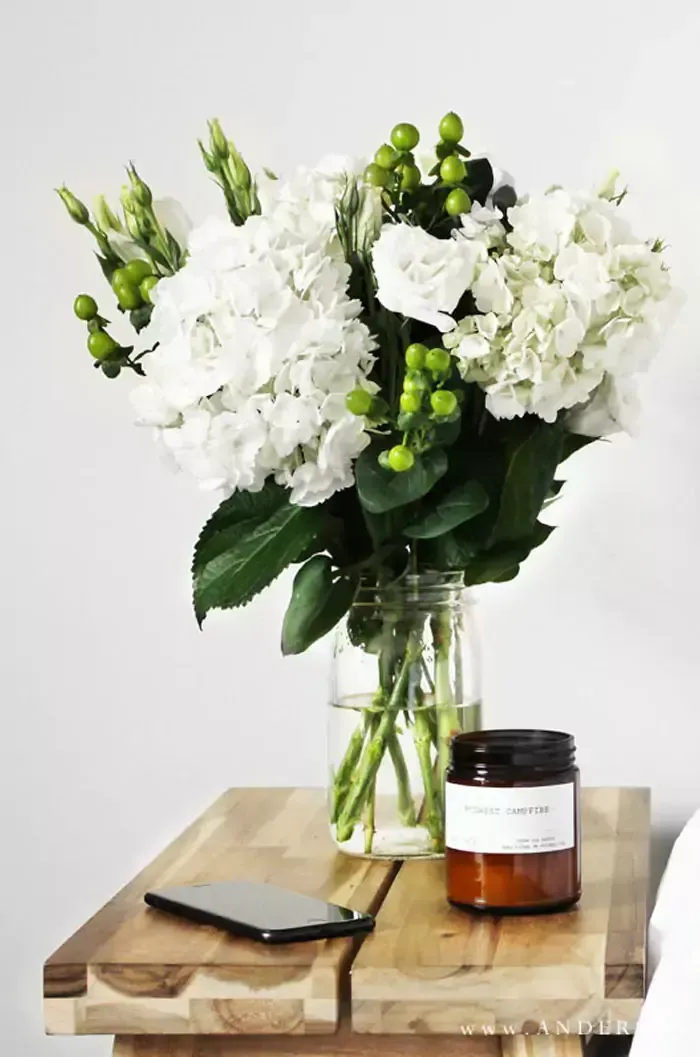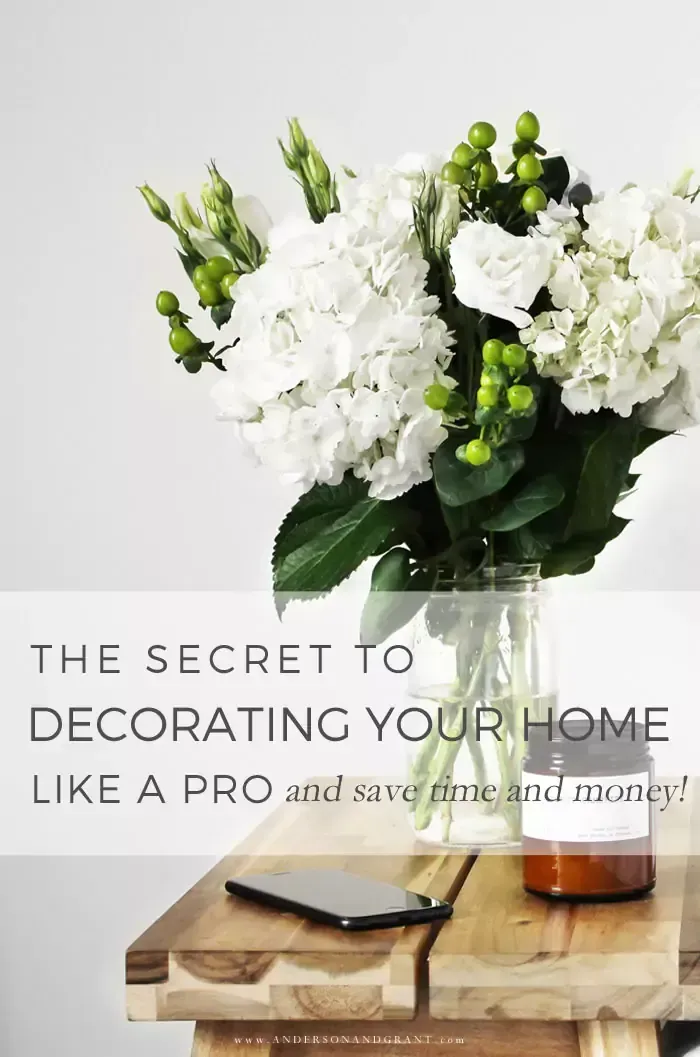We all want a home that looks as pretty and put together as our favorite magazines, yet it sometimes seems impossible to achieve for the average homeowner. The secret behind creating those picture perfect houses is understanding how to create a cohesive design and it is easier than you might think....and will even save you time and money when redecorating!
DESIGN + STYLE | Updated March 24, 2023

Have you ever walked into a house where it feels like one room flows right into the next?
Or come across photos of homes on Instagram where everything just seems to go together? Rather than seeing individual rooms, you are able to look at the house as a whole with each room seamlessly connecting to the next.
And in these instances, you likely assume that either the person who did the decorating really knew what they were doing or they had a large budget allowing them to hire a designer who bought the best of everything. The average person can't possibly create a cohesive design all on their own and do it on a budget, can they?
Actually, not only is everyone capable of designing the rooms in their home with a consistent flow, but it actually makes decorating easier AND saves money. This post will explain just what cohesive design is, how to do it, and how it helps you to design a beautiful space even on a budget.
HOW TO CREATE A COHESIVE DESIGN FOR YOUR HOME
What is Cohesive Design?
Designing the interior of your home involves choosing different elements that all need to come together with coherence.
- There are fixed finishes like your floor color, cabinet color, and appliances you must design around unless you plan on completely starting from scratch.
- Then you've got choices to make for variables like paint, cabinet hardware, and fabrics for curtains and pillows. These things need to coordinate with the fixed items and with each other.
When a decorating project starts, we all tend to think about just the room that we want to change. And while the finished room may look fabulous, it may also seem out of place with the rest of your house now because you designed for a single space rather than the house as a whole.
To put it simply, creating a cohesive design means that you find a decorating "recipe" that you love and then stick to it from room to room. Each room will contain the same combination of colors, finishes, metals, and textures but in different ways and intensities.
There is no longer a need to reinvent a design each time you want to do a little redecorating. You can just add to your design and your home becomes unified.
What Does It Look Like to Design with a Cohesive Look?
There are six different things to consider when trying to create a design that flows from space to space.
- Same or similar paint colors from room to room. Either stick to one color that you love for the entire house, or use shades of a similar color like light and dark grays. Going from one room that is yellow to another that is blue is not cohesive.
- Same flooring and trim where appropriate. This doesn't mean that if you have hardwood flooring in the dining and living rooms, you can't put tile in the bathroom and kitchen or carpeting in the bedrooms. The important thing to remember is that the rooms that connect are not broken up with mismatched flooring for no reason.
- Coordinating wood tones. Choose two or at most three wood tones for flooring and furniture that coordinate together and are used throughout your house.
- Same finishes. When choosing hardware for doors and cabinets or fixtures like faucets and shower heads, try to choose the same finishes throughout the house for consistency. For example, choose aged bronze knobs, handles, and pulls for the kitchen and bathroom cupboards or a matte black finish for all your bathroom fixtures.
- Repeated elements. Elements that you choose for one area of your home can be repeated elsewhere in a different way. Like the black tile (or similar black tile) you choose for the entryway can be used around the fireplace.
- Similar color palette with a focus on neutrals. Focus your design on a base of grays, blacks, whites, and tans for items that are difficult or expensive to change like flooring, tile, sofas, and paint. Your pops of color, pattern, and style come in with what you add on top like rugs, pillows, and decor.
For example, maybe your look comes together as a neutral color pallet with pops of blue, aged wood, white walls, thick chunky trim, dark hardwood floors, concrete countertops, and accents of black metals and glass.
There is no right or wrong combination. It is your vision of the elements that speak to you which will set you up for a truly unique home.

Doesn't This Make Your Design Look Boring?
You might be questioning right now about how this idea doesn't lead to a boring or uninspired design.
Just because you are choosing the same elements does not mean that every room will look just like the next. There are many different ways to incorporate your favorite design elements without repeating how you do it.
You don't need to put shiplap on every wall and have identical lights hanging from every ceiling. You don't even need to choose light fixtures all in the same metal tone. You can have glass shade fixtures over the island, and a black wrought iron chandelier over the dining table ...as long as glass, and black metal are elements you've chosen.
What is important is how well all of the colors, finishes, and textures go together when the room is completed.
And even though the basic design elements are repeated in different ways around all of the rooms, what you layer on top adds the charm and style. The antique rug you lay on the floor in the dining room. The handmade patterned tile you install as a kitchen backsplash. The gallery wall you create with pictures of your loved ones.
When those special moments are added on top of a similar backdrop, they each have the chance to shine in your home rather than compete with everything else in the house.
Why is Cohesive Design Important?
There are multiple benefits to decorating with a design that coordinates from room to room throughout your home.
- With a cohesive design, you know what to choose when shopping without trying so hard or having to overthink exactly what would look best. A basic design plan is already in place and you know what elements will fit, so you are able to eliminate everything that doesn't.
- Being equipped with a basic shopping list can save you money since you are no longer buying random items that you find won't work in your home. A cohesive design gives you the benefit of being intentional with what you are choosing, rather than buying just to buy.
- You can always move what you've bought to somewhere else in the house because everything coordinates together. Items from your rooms can be mixed and matched into any room. For instance, you may want to spruce up the living room with a few new pillows for the couch, and because the ones you're replacing also coordinate with your bedding, they can now add a pop of color or texture to a different room without a redesign.
- Homes that flow one room into the next can be calming both to your eyes and your spirit. They seems uncluttered, open, and give you room to breathe and relax.
- Although this type of design is especially important if you have an open concept home, it can also be beneficial in smaller homes with enclosed rooms. It will actually make the rooms seem larger with one space extending into the next visually. Things don't seem choppy and segmented, especially in terms of the flooring and wall color choices.
Cohesive Design Removes the Need to Define Your Decorating Style
Creating a cohesive design for your home isn't necessarily about defining your decorating style, although your style may play into the elements you choose. It is more about how everything plays with each other.
You no longer have to say that you have a "farmhouse" style and then figure out what that means. Rather, you can say that your style involves white shiplap walls, dark wood floors, and unique vintage finds.
Many times, it is hard to choose just one style. You may like the modern farmhouse look, but also tend to choose décor that is industrial or even rustic.
When decorating your home, it isn't important to be able to narrow in on one specific style name to define yourself. What IS important is ending up with a home filled with the things you love.
READ NEXT: How to Uncover Your Unique Decorating Style
In some ways, this may seem complicated, especially if it isn't in your budget to redecorate your entire house at one time. But it is something that you can start incorporating and thinking about now with one room and that plan will guide you later when redecorating another room.
And honestly, if you look closely at things you've purchased, you may find some common themes around what is already there. We do tend to buy according to what we love.
You just need to focus in on those elements you truly love and feel could be repeated from room to room, while removing what is covering up the cohesive style that you already have.

